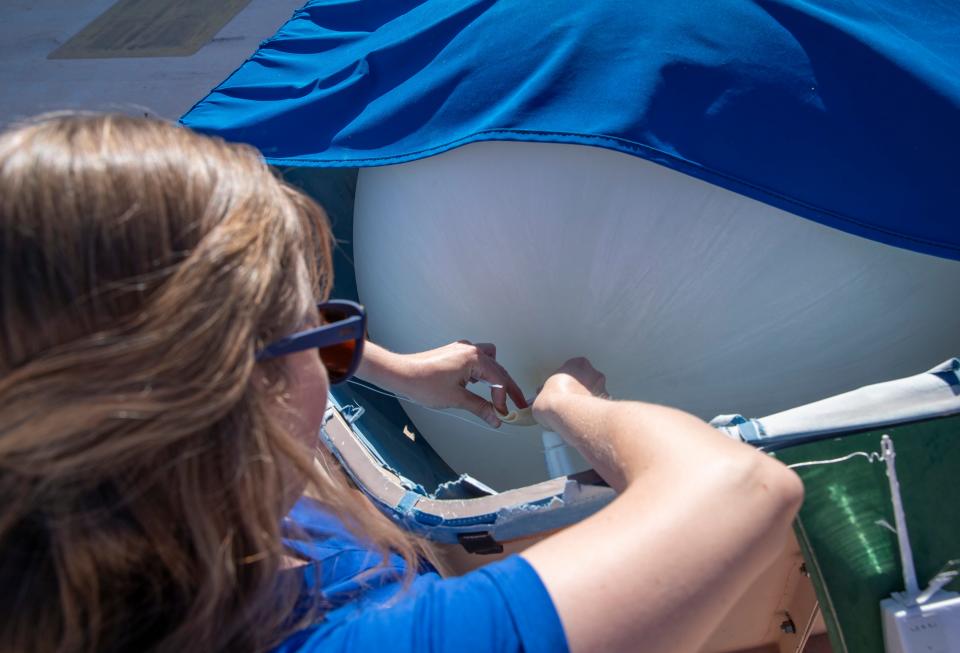How a balloon and a zip tie help SRP and the weather service monitor monsoon activity
In the sky over the Salt River Project building in Tempe, a little white speck was getting smaller and smaller. It would stay aloft for around an hour and a half, floating up to around 50,000 to 60,000 feet before popping and falling back to Earth.
The speck of white was a weather balloon, a few feet across and made of white, powdery latex. The data transmitted by the balloon immediately after launch helps meteorologists fine-tune temperature forecasts and understand the likelihood of summer storms.
This data is an “added layer of detail,” that helps meteorologists understand if conditions are right for a storm, and can help forecast power outages, said Laura Hodgens, a meteorologist with Salt River Project, one of Arizona’s largest utility companies.
SRP and the National Weather Service collaborate to launch at least one balloon a day during monsoon season, from mid-June to late September, around 150 balloons per year. They launch around 5 a.m. and again at 5 p.m. if a storm seems possible.
How to launch a weather balloon
The balloon launching operation was simple and low-tech, consisting of the balloon, a zip tie to seal the balloon's end, a plastic spool of string, a hose for the helium tank and the transmitting device, called a radiosonde.
This device is a small styrofoam pod with a thin metal rod sticking out of one end. Hodgens packed the gear into a bag and brought it up to the roof, where she filled the balloon, dialed nearby Phoenix Sky Harbor International Airport and waited for the all-clear.
When she released the balloon, it flew away quickly, carried by the wind, and after a couple of minutes was barely visible.
Back downstairs at the weather service, data was already being transmitted to a computer. A readout showed the balloon was around 6,000 feet, almost 2 miles away, measuring a temperature of around 23 degrees Celsius, or 73.4 degrees Fahrenheit. The balloon also measures pressure, dew point, humidity and wind direction and speed.

This is “bread and butter” data for meteorologists, said Austin Jamison, a weather service meteorologist.
The data helps SRP forecast temperatures and severe storms. The utility company can use this data to forecast how much power might be generated for that day or figure out how much staff they’ll need if outages happen.
By the time the balloon pops, it’ll probably be out of the city around the mountains or another rural area, Hodgens said. She said the styrofoam, plastic and latex degrades over time.
'Hands-on' science
Hodgen’s demonstration was an exception: The launching is usually done by SRP interns by flashlight in the early hours of the morning or under the sun during the hottest hours of the afternoon. Meteorology intern Jessi Moeschl has no complaints.
“I really like it,” she said. "It makes me feel like I’m doing something, actually going out and measuring, that actually does have an impact … I like to think I’m contributing to national weather.”
That’s another benefit provided by weather balloons that isn’t observable in the data — it’s just fun to launch things.
“It’s one thing to spend your day looking at the weather models and satellite imagery and all of the other data sources that we use,” Hodgens said. “Those are great, but there’s nothing like getting your hands on actual instrumentation and launching it. It’s just a fun experience.”
This article originally appeared on Arizona Republic: The low-tech way SRP forecasts monsoons in Phoenix and beyond

